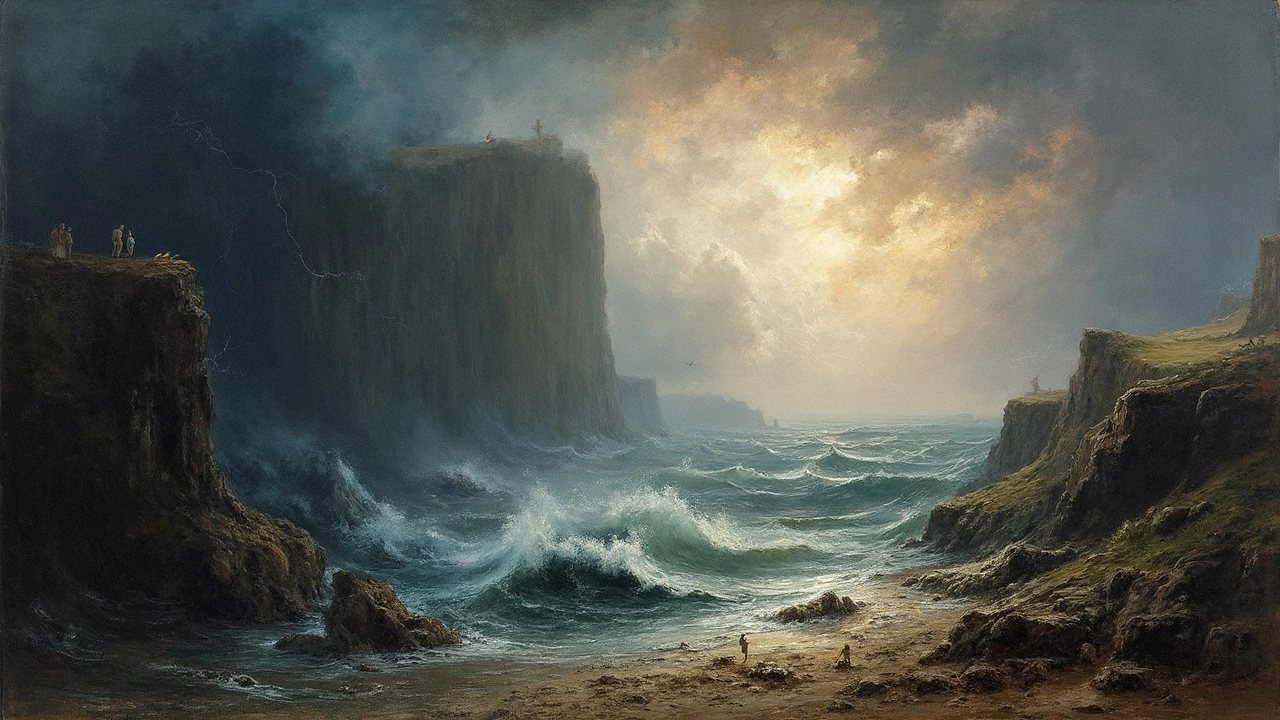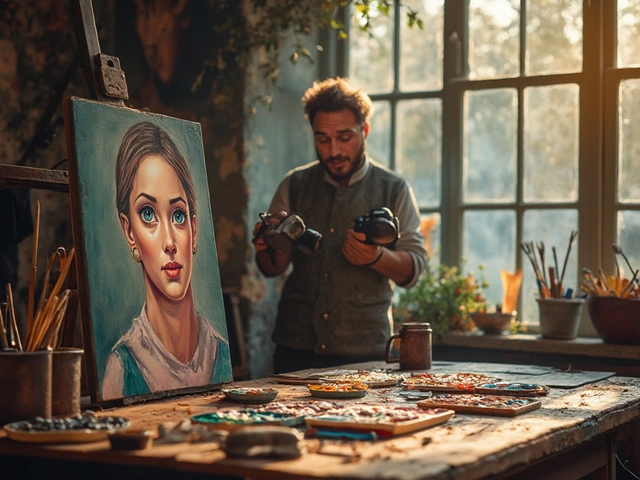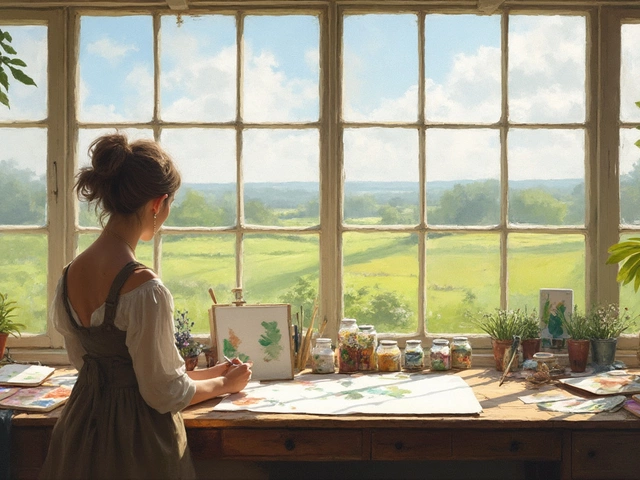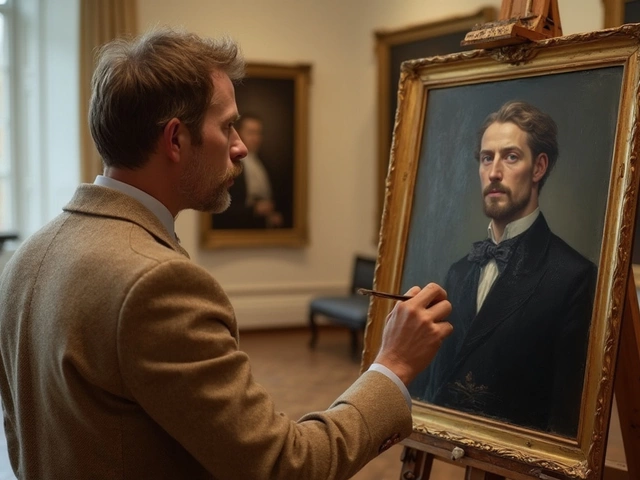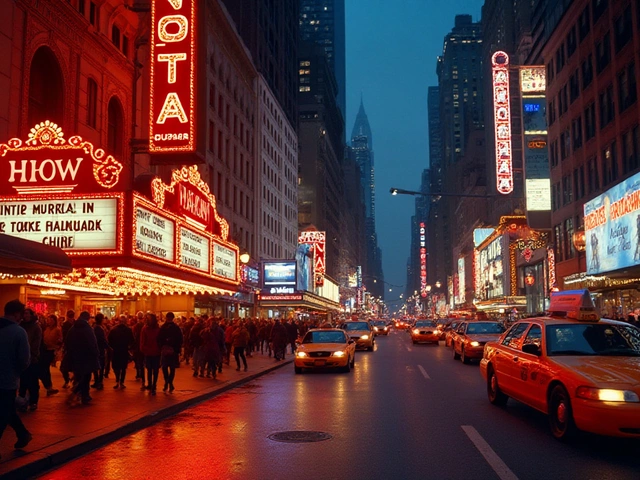Nature isn’t always gentle, and that’s exactly what makes romantic landscape paintings so interesting. You’ve probably seen those wild mountains with stormy skies, or peaceful farms where nothing ever seems to go wrong. Turns out, these aren’t just random moods. Romantic landscape painting splits into two major types: the intense, almost scary Sublime, and the soft, comforting Pastoral.
Why does this matter? Well, knowing the difference actually changes how you see the art—whether you’re browsing a museum, debating a print for your living room, or hunting for lost treasures at a yard sale. Artists from the 1800s, like Turner and Constable, didn’t just paint nature—they picked a team: dramatic or dreamy. If you can tell which is which, you’ll start spotting cool details that most people miss.
Stick around because we’re about to break down both kinds of romantic landscapes in way that’s totally clear, no art degree required. Next time you spot a moody mountain or a sun-soaked valley, you’ll know exactly what you’re looking at—and you’ll sound like you know what you’re talking about, too.
- What Makes a Painting 'Romantic'?
- The Sublime: Awe and Drama on Canvas
- The Pastoral: Calm, Charm, and Escape
- How to Spot the Difference in Real Life
What Makes a Painting 'Romantic'?
When someone calls a landscape painting "romantic," they don’t mean a candlelit dinner scene or something mushy. Romanticism, in art, is about feeling. It’s the kind of painting that grabs you, maybe awes you, or lets you escape into another world. The romantic landscape paintings from the late 1700s and early 1800s sparked this trend—they made people feel something real about nature: either small and amazed, or calm and content.
This wasn’t just random. Back then, artists were reacting to the fast-changing world. Cities were growing like crazy, science was rewriting rules, and people craved something pure and big outside of all that chaos. Painters like Caspar David Friedrich and J.M.W. Turner—a few names you’ll hear a lot—started making art that was less about copying a real place and more about what it felt like to stand there. The brushstrokes became looser, colors a little more wild, and sometimes, the landscapes were made up, mixing mountains and valleys from different spots in real life.
Here’s what sets romantic landscape paintings apart from earlier styles:
- Bigger focus on mood and atmosphere, not just pretty views.
- Nature shown as powerful, sometimes even scary or overwhelming.
- People, if shown at all, are really small—nature’s the star.
- Colors, light, and even weather used to set the mood (think gloomy fog, golden sunsets, or booming storms).
If you’re ever trying to spot a romantic landscape in a gallery, look for a painting that feels almost like it’s telling you a secret about nature—something about the feeling of being there, not just the view itself. That's the real giveaway. These works changed how people saw the world, kicked off a bunch of spin-off art movements, and honestly, still inspire a lot of what we call landscape art today.
The Sublime: Awe and Drama on Canvas
Let’s talk about romantic landscape paintings where nature looks wild, untamed, and maybe even dangerous. This is what artists call the Sublime. Think crashing waves, rumbling clouds, steep cliffs, and volcanoes ready to blow. The idea is simple: these scenes make you feel small, a bit scared, but also full of wonder at how powerful nature can be.
The Sublime hit its peak in the early 1800s, especially in England and Germany. The painter J.M.W. Turner is a giant in this style. His sunrises aren’t just pretty—they almost blind you. His seas look like you could drown if you got too close. And then there’s Caspar David Friedrich, who painted mountains and icebergs that make you think twice about hiking alone. Artists like these wanted viewers to feel raw emotions, not just see pretty views.
So why did this type of landscape take off? In the 18th and 19th centuries, there was this new trend: finding beauty in things that were actually kind of scary. People were into exploring, climbing mountains, and writing about big storms. Painters jumped on the same train, showing nature as something you couldn’t control.
Want to spot a Sublime painting? Here’s what to look for:
- Moody skies—lots of dark clouds, storms, or the sun fighting through.
- Massive natural stuff—mountains, waterfalls, oceans, light bursting through mist.
- Tiny humans—if you see people, they look small and powerless compared to nature.
- Lots of drama—nothing quiet or gentle, everything’s a little over-the-top.
Just how big of a deal was the Sublime in landscape art? Check this out:
| Artist | Famous Sublime Work | Year |
|---|---|---|
| J.M.W. Turner | Snow Storm: Steam-Boat off a Harbour's Mouth | 1842 |
| Caspar David Friedrich | Wanderer Above the Sea of Fog | 1818 |
| Thomas Cole | The Course of Empire: Destruction | 1836 |
Next time you’re in a museum, see if you get that roller-coaster feeling from a big landscape art painting. If it makes you a little nervous but also can’t look away, it’s probably Sublime.
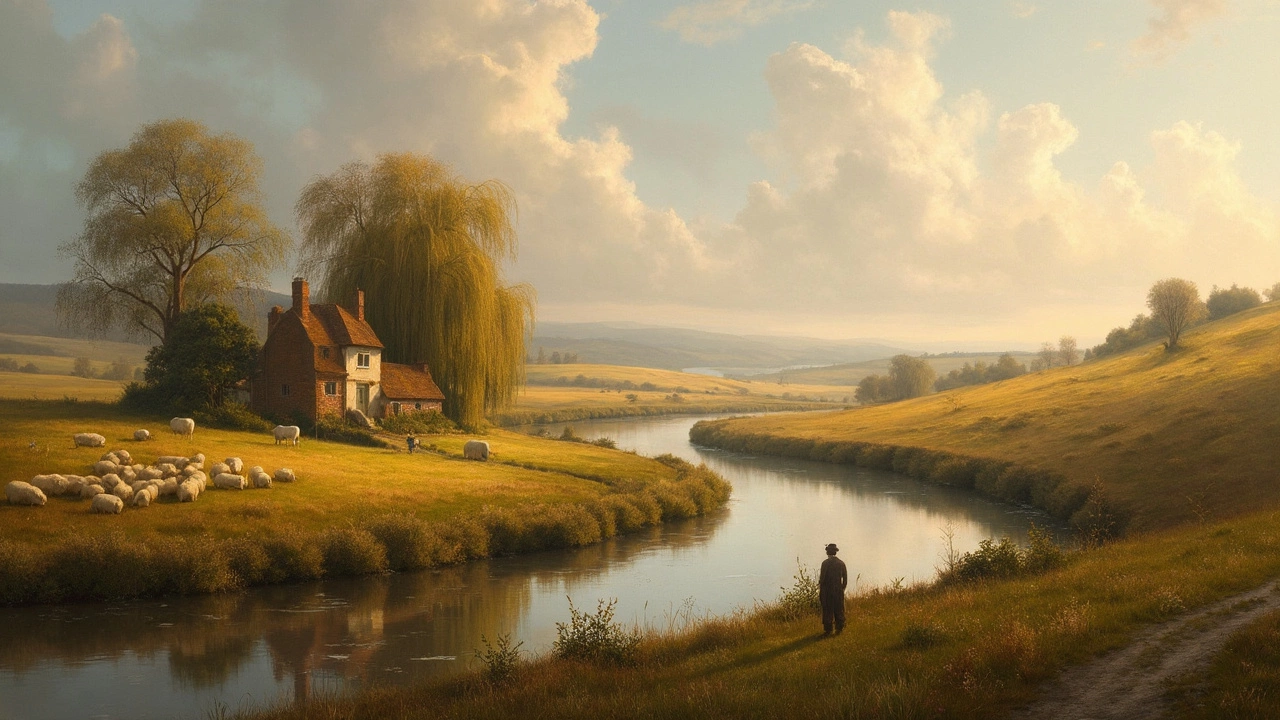
The Pastoral: Calm, Charm, and Escape
If someone says "romantic landscape paintings," the image that pops into your head might be classic pastoral landscapes. Think gentle hills, clear skies, peaceful streams, and maybe a cow or two standing around doing absolutely nothing stressful. The point of these paintings is to give viewers a break from real-life chaos. It’s nature as a safe haven—a quiet escape where everything feels easy and under control.
Artists in the 1800s, like John Constable in England and Jean-Baptiste-Camille Corot in France, were all about capturing this mood. They wanted to show the countryside as a place of calm and beauty, just right for daydreaming. You get neat rows of crops, tidy little cottages, and people who look almost too relaxed. It's a deliberate move to fight off the grime and speed of city living that was exploding during the Industrial Revolution.
What do you actually see in these paintings? Here’s a quick checklist:
- Warm light, often with golden or soft sunlight
- Balanced, friendly spaces—no wild cliffs or scary weather
- Animals and people shown in harmony with nature
- Scenes of daily work like herding sheep or harvesting, but always looking clean and simple
- Small touches like winding paths, quiet lakes, and lush, healthy trees
It’s not just about what’s painted, but how it’s painted. These artists avoided drama and chose mellow colors—greens, browns, and blues. And unlike a tourist photo, things are arranged to pull your eyes into the scene, making you feel like you could step in and relax. The message? Life in nature can actually be good, not just wild or overwhelming.
Here’s an interesting fact: data from museum collections shows that pastoral themes were the most popular among landscape buyers in the early 19th century. People wanted that sense of calm on their walls. You can even spot these ideas in today’s calendars and wall prints—the love for peaceful countryside never really went away.
So, next time you’re staring at a leafy field or a soft riverside in a painting, check for those mellow vibes. Chances are, you’re looking at a textbook example of a pastoral romantic landscape painting.
How to Spot the Difference in Real Life
When you’re staring at a romantic landscape painting in a museum—or even just online—it can be confusing to figure out if it’s Sublime or Pastoral. They both feature nature, but the vibe and purpose are total opposites. Here’s how you can tell what you’re looking at every time.
- Look for the mood first: Sublime scenes make you feel small. Think giant thunderclouds, wild waterfalls, jagged cliffs. There’s usually some drama, maybe even danger. Pastoral scenes, though, calm you down. You’ll spot rolling green hills, sleepy farm animals, quiet streams—stuff that almost feels like a daydream.
- Check out the colors: The Sublime isn’t shy—expect deep blues, dark greens, and sharp contrasts. The Pastoral goes for softer greens and warm sunlit yellows. Everything blends, nothing shocks.
- Scan for human life: In Sublime paintings, humans are usually tiny—maybe a lone wanderer dwarfed by nature, or nobody at all. Pastoral types love a good shepherd, families resting, or people working the land—nature feels friendly, not scary.
- Where’s the drama? Sublime artists (like Turner) love storms, mountains, shipwrecks, the whole “epic” look. Pastoral artists (like Constable) go for clear skies, lazy rivers, and safe countryside. If it looks like a place you’d want to have a picnic without checking the weather, it’s probably Pastoral.
For a quick cheat sheet, here’s a side-by-side comparison:
| Sublime | Pastoral | |
|---|---|---|
| Mood | Intense, awe-inspiring | Calm, peaceful |
| Color Palette | Dark, bold | Soft, gentle |
| Human Figures | Tiny or absent | More obvious, social |
| Common Artists | J.M.W. Turner | John Constable |
Quick practical tip: If you’re hunting old landscape art at a flea market or online auction, Pastoral scenes are usually more popular with people who want that comfort vibe in their homes. But Sublime works stand out in modern, dramatic interiors. It’s not just about looks—it’s about the feeling you want to bring into your space.
The next time you see a romantic landscape painting, ask yourself: Do I feel like I’m about to get swept up in a storm, or could I take a nap under a tree? That gut feeling pretty much tells you which type you’re looking at.
